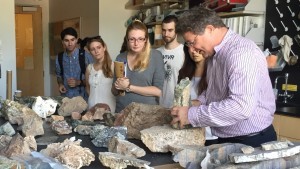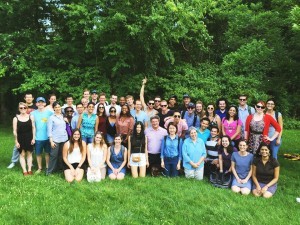After lunch, the program was able to tour the facilities themselves, including the award-winning Comer Geochemistry building and the Core Repository, where thousands of core samples from the ocean floor, some 100 million years old, are stored and analyzed to provide clues about the Earth’s natural history and how it has changed over time. In fact, several of the program’s science labs throughout the summer base their data off previous work done at Lamont over the years, a fact that many students enjoyed. “It was really incredible to learn about the history of Lamont and how all the work these people have done has carried over to our program and the global scientific community as a whole,” said Ali Zamani, a member of the class of 2016. Fellow classmate Travis Tran considered himself “fortunate, awed and inspired” to have been able to tour the campus, calling it a reminder how important his time at Columbia is in preparing himself to one day be a better equipped leader in making the world a better place.
****
Students in the MPA in Environmental Science and Policy program enroll in a year-long, 54-credit program offered at Columbia University’s School of International and Public Affairs, in partnership with the Earth Institute.
Since it began in 2002, the MPA in Environmental Science and Policy program has given students the hands-on experience, and the analytical and decision-making tools to implement effective environmental and sustainable management policies. The program’s 741 graduates have advanced to jobs in domestic and international environmental policy, working in government, private and non-profit sectors. Their work involves issues of sustainability, resource use and global change, in fields focused on air, water, climate, energy efficiency, food, agriculture, transportation and waste management. They work as consultants, advisers, project managers, program directors, policy analysts, teachers, researchers and environmental scientists and engineers.
Visit our website for more information: http://mpaenvironment.ei.columbia.edu/


